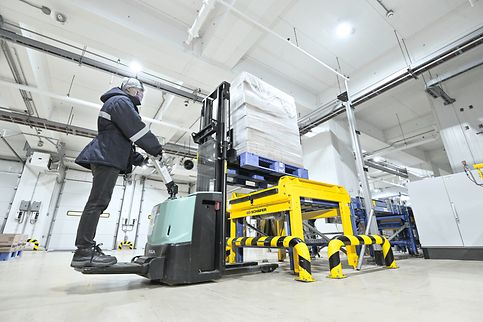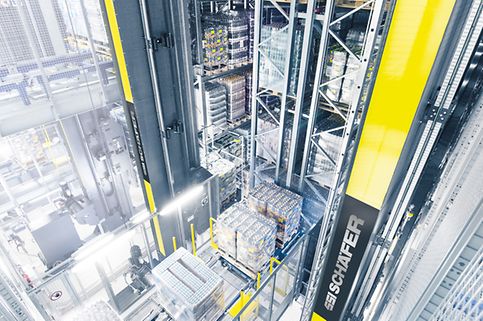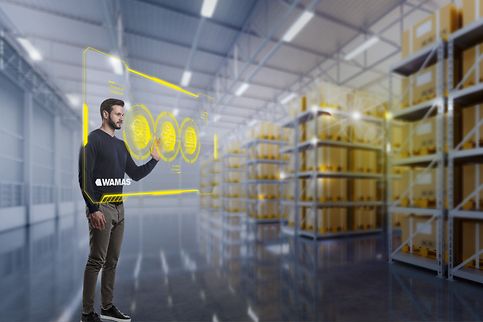Is Automation only for Large Companies? An Interview with SSI SCHAEFER
To stay competitive in a pandemic climate, many food and beverage businesses might have considered, researched and even strategized co-opting automation solutions to their operations. For many of them, the term automation still implies machines or robots taking over manufacturing plants. While there is a space and need for such solutions, automation can also further enhance efficiency side-by-side with human labour. Further, manufacturers could also incorporate software solutions that help ensure product quality and safety that Labour would struggle to keep up with.
It is inevitable that in our volatile climate, the appeal of such automated technology would be highlighted. In this article, Asia Pacific Food Industry magazine speaks to Wallace Tay, Logistics Solutions Regional Director from SSI SCHAEFER to understand the push and pull factors of automation for businesses of all sizes, as well as their appeal in this environment.
Question: What are some pressing challenges within the Cold Chain in Asia?
Answer: In Southeast Asia’s circle of developing countries, the need to ensure product quality and safety within a cold chain is paramount. Safety is verified by monitoring and maintaining the external environment and temperature of food. In particular in the cold chain environment, when transferring and handling products from location to location, handlers need to prevent the introduction of hot air into a cold environment, or prevent cold air from escaping. With manual labour, this monitoring task becomes repetitive and sometimes difficult to track, especially if the product is traveling a long distance with various points of transfer or if accurate data is not recorded by personnel.
Question: What are some Innovative Solutions for these issues?
Answer: To address such pressing challenges, SSI SCHAEFER’S end-to-end automation solution would be ideal to cut down on reliance on labour, repetitive work processes and ensure products are safe and stored in pristine condition.
Following a typical journey, when the goods arrive at the loading bay, the pallets are tagged with a QR and barcode using a handheld mobile device which is then logged into the client warehouse management system. Here, the zero to minimal human interaction begins. The goods are transferred to cold storage via an automated conveying system. With the entire logistic system powered by the SSI WAMAS® Software, it receives the inventory information and sends the information to the SSI Exyz – automated storage retrieval system to store the pallets. Used in a controlled temperature environment, the system can prevent moisture and any tempering of products.
The pallets are then automatically retrieved by the SSI Exyz from the right shelve and bay for delivery and its out-going information is captured in the system. Thereby ensuring 100 percent transparency in the material flow within the warehouse. This entirely automated process also ensures that there is no slippage of cold or hot air within the cold storage environment (-18 degrees C to -25 degrees C) – a temperature that is difficult for humans to operate in. Furthermore, with little to no humans intervention, power can be saved as doors and lights are not needed to be switched on 24 hours, which would help the company operate more efficiently in the long run.
Question: What is your advice for manufacturers to get through the pandemic?
Answer: Adopt innovative solutions – I cannot stress this enough. It is important to understand that automation isn’t only for big players; small and medium enterprises can afford to automate in order to reduce manpower risks, improve output efficiency and enhance product safety. The deeper we delve into the pandemic climate, the more we see the need to incorporate solutions for traditionally “menial” tasks, such as cleaning for example. While in pre-COVID times, it would be an easy task to employ human labour to carry out the task of sanitation, now a risk is introduced into the manufacturing climate with the possible introduction of the virus.
We’ve all heard the concept of “adjusting to new normal”, and I believe one aspect of that is upholding the cleanliness of the warehouse without human interaction to reduce the risk of virus transmission between labour and through food/packaging.
A successful case study on the topic of innovation hails from the Philippines: ORCA Cold Chain Solutions is the country’s pioneer fully automated cold chain facility, a feat that would not have been possible without the desire to innovate to increase Philippines’ preparedness in case of local disasters or cases such as the pandemic. The ORCA warehouse offers temperature-controlled logistics, warehousing and pre-and post-storage value added services to help food businesses and the agriculture industry prolong and maintain the freshness of their produce.
Angela Degala, VP of Sales & Operations from ORCA summarizes with her comment: [We are] the first and only company to invest this heavily on what we call food infrastructure. […] We saw how customers gravitated to our brand because of the promise of automation. We also experienced first-hand how the market perceives the value that innovation can bring.
Disclaimer:
This article was originally published in Asia Pacific Food Industry magazine’s Mar/Apr 2021 issue. Read the original version here.


